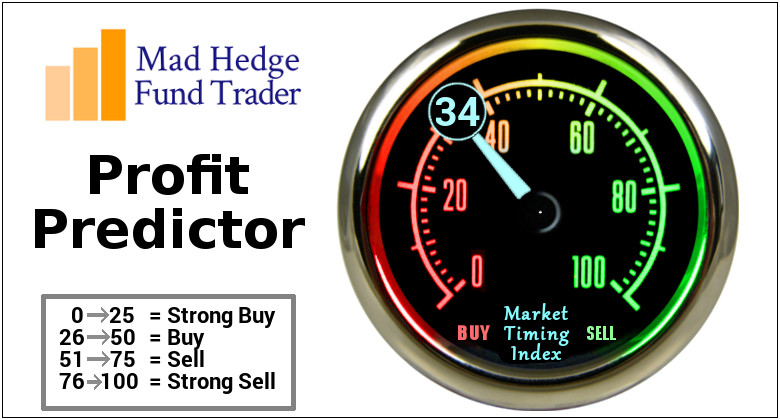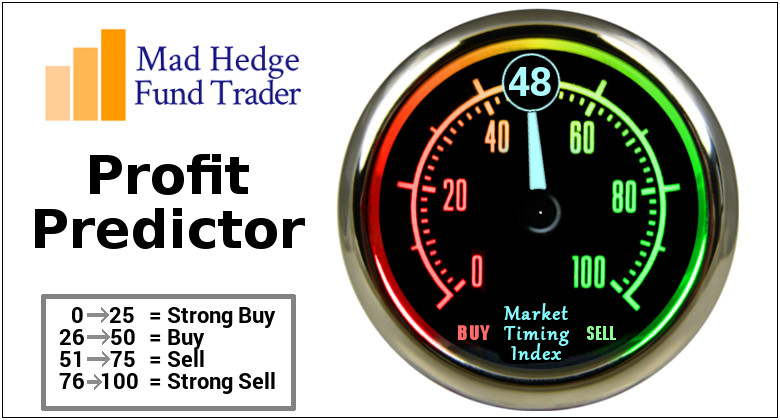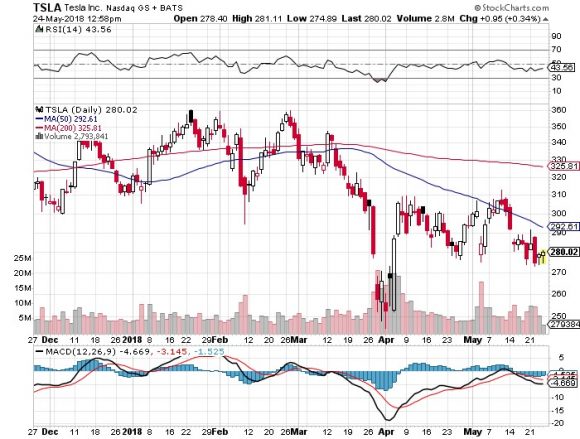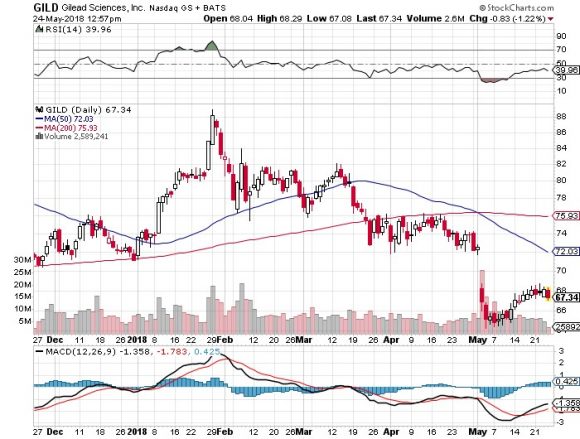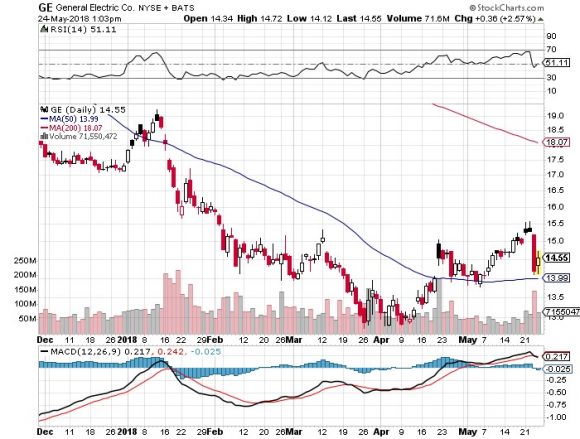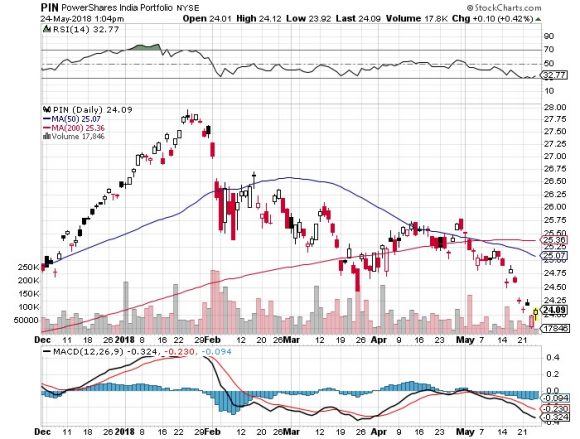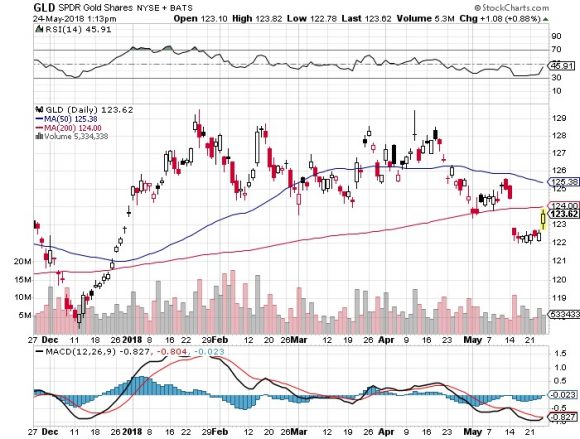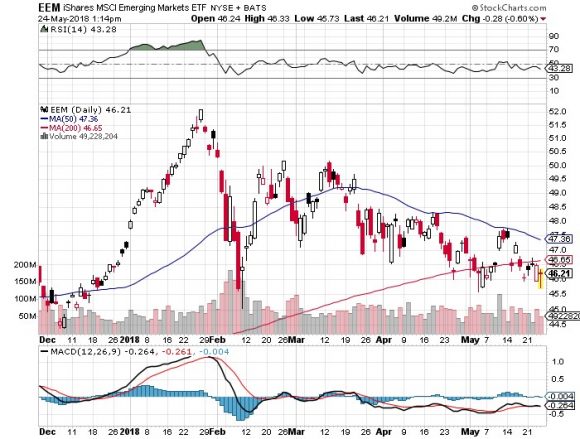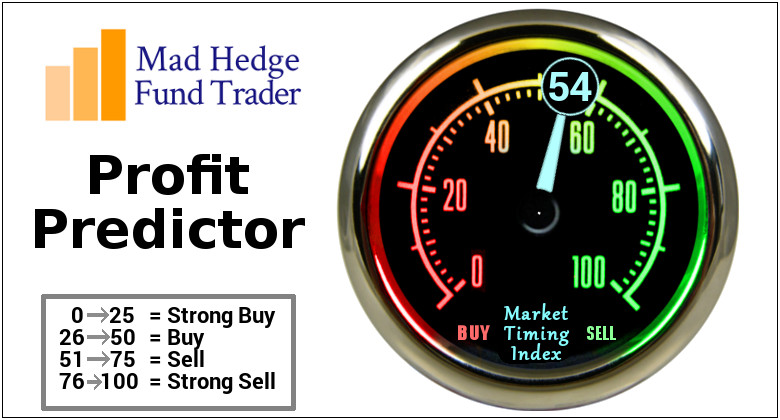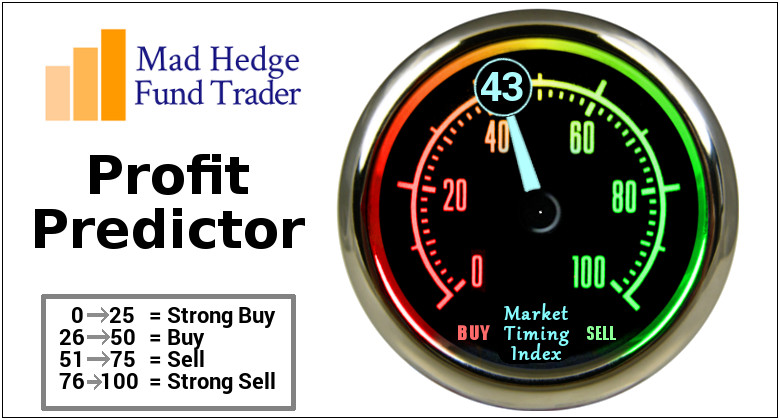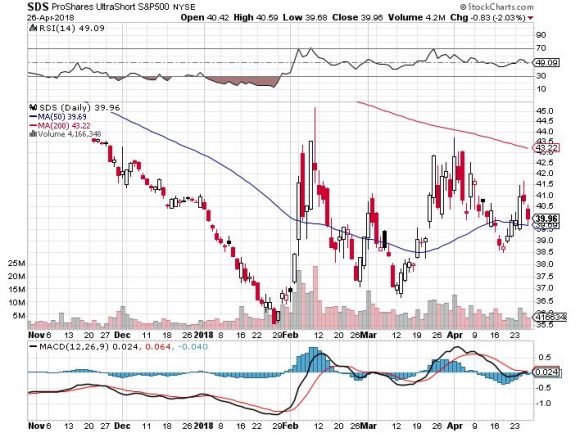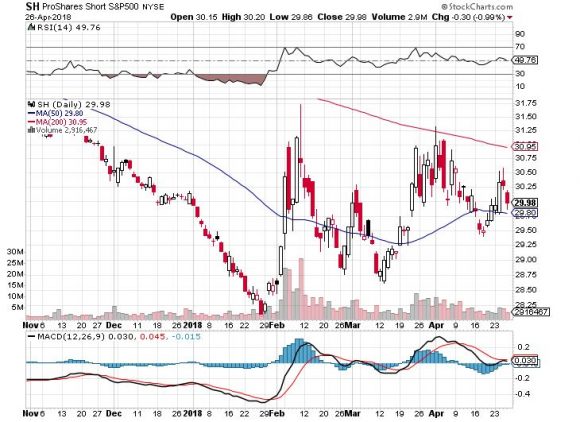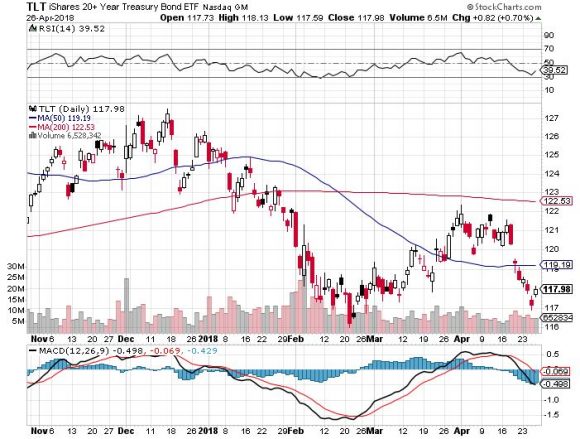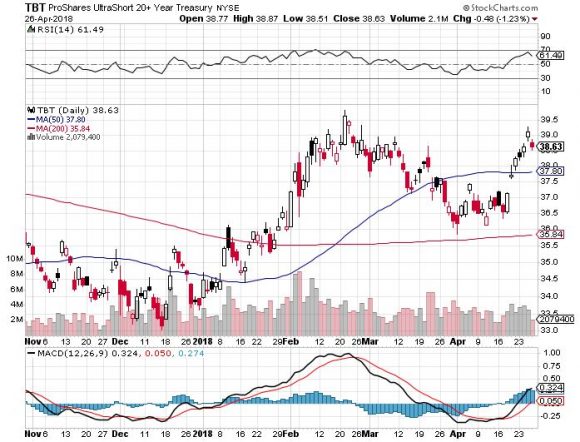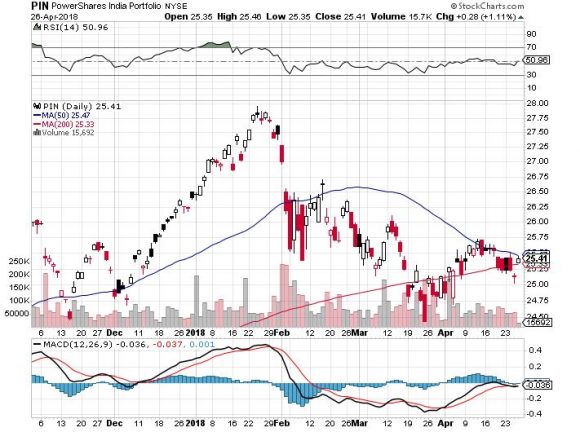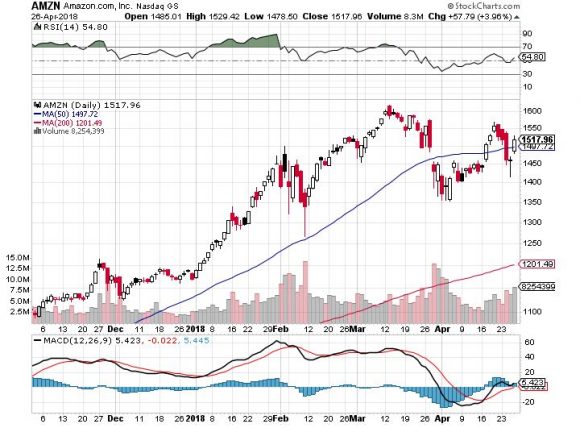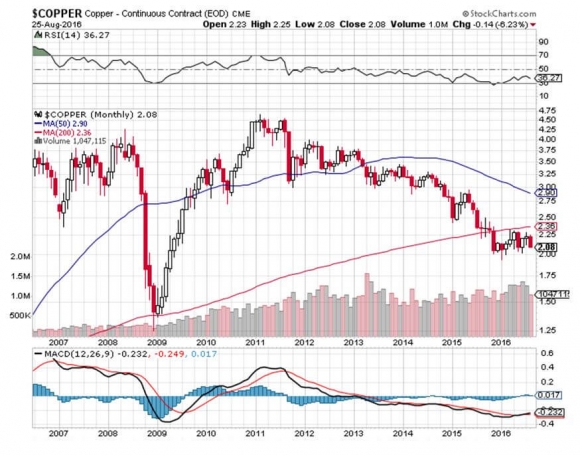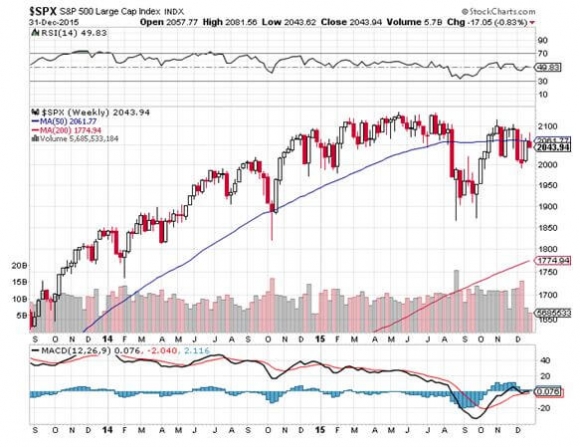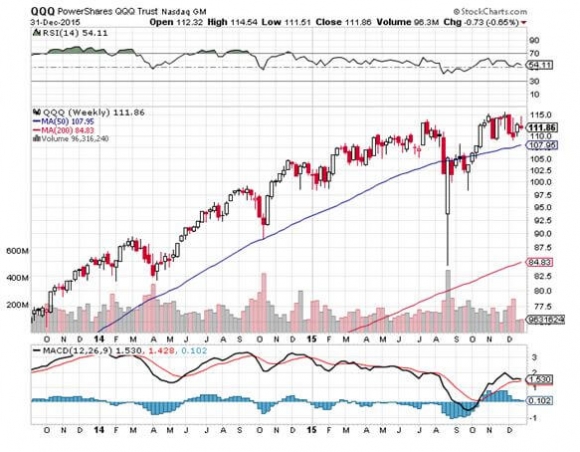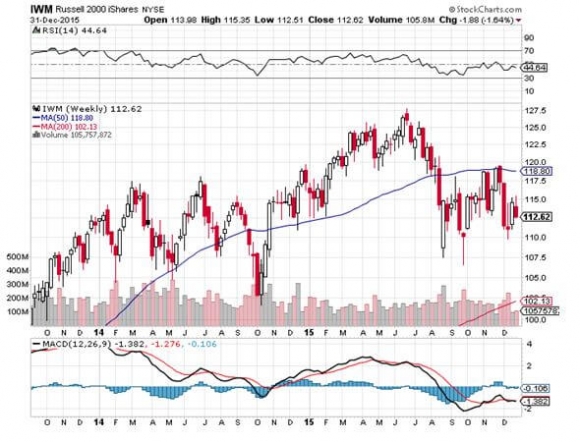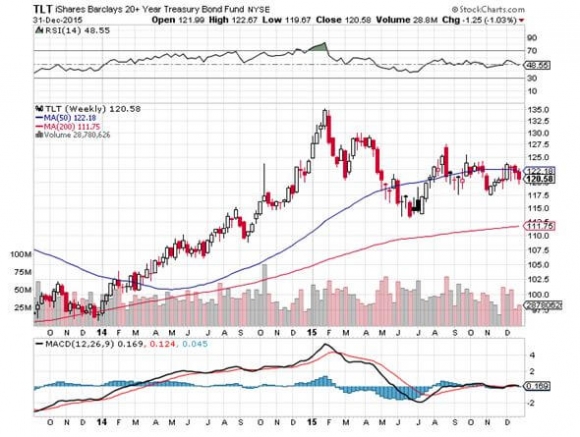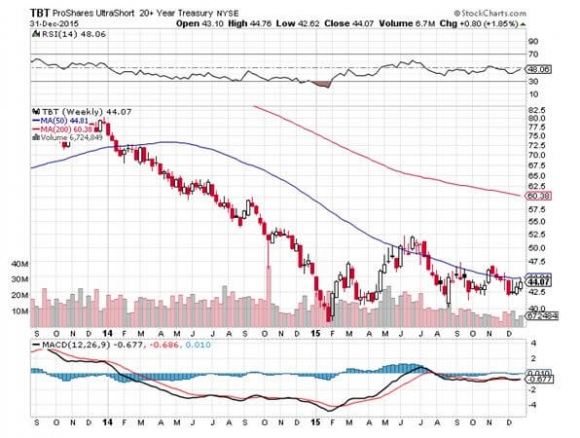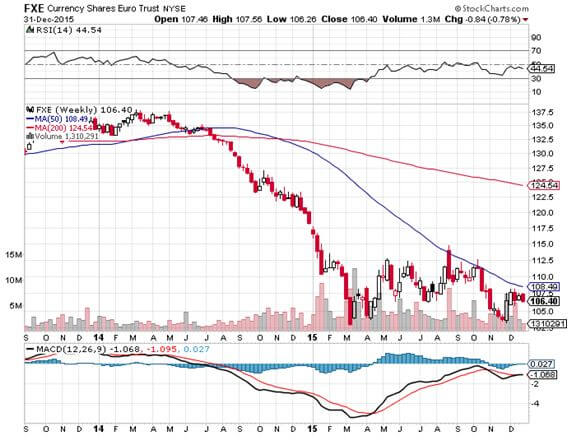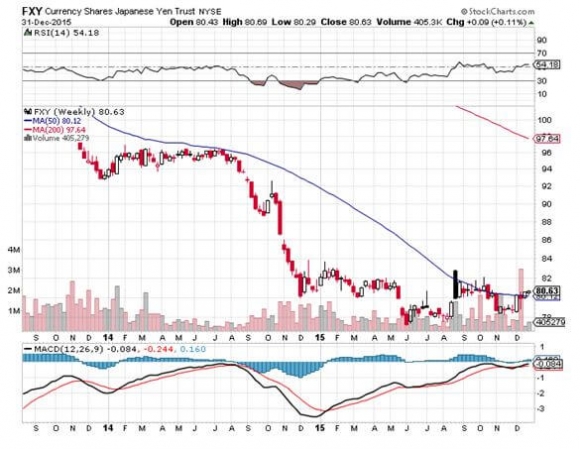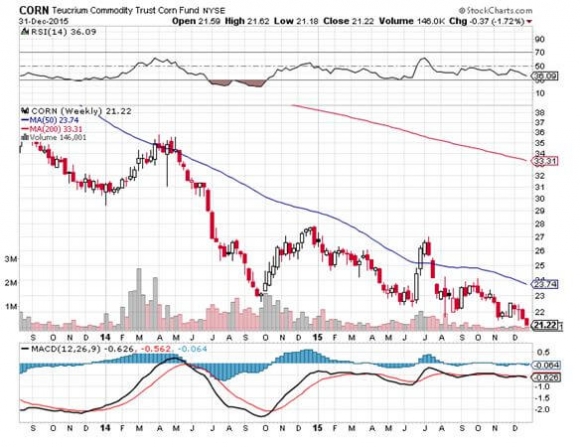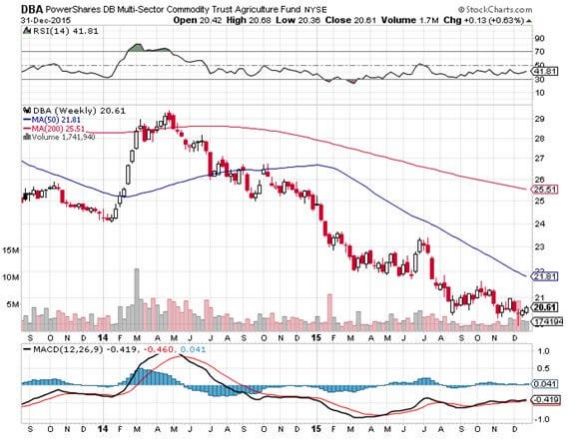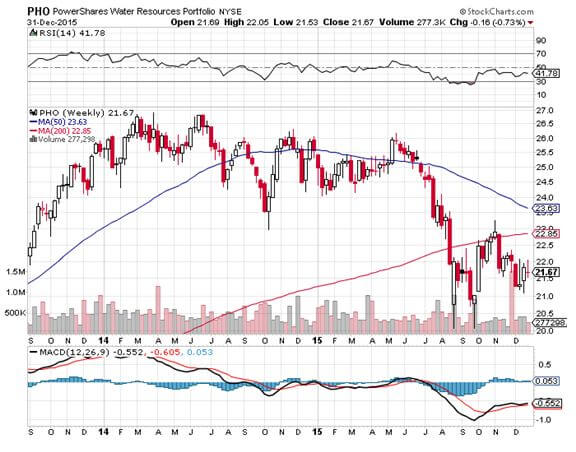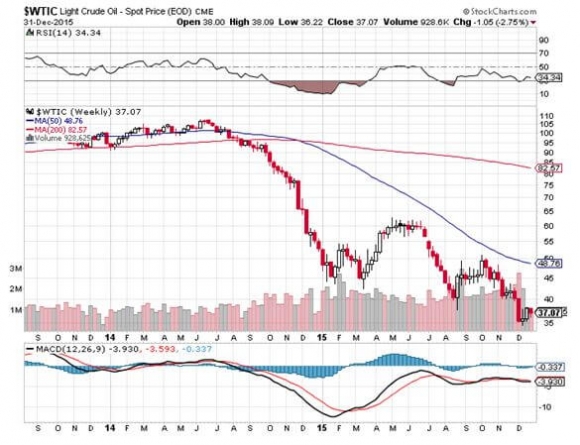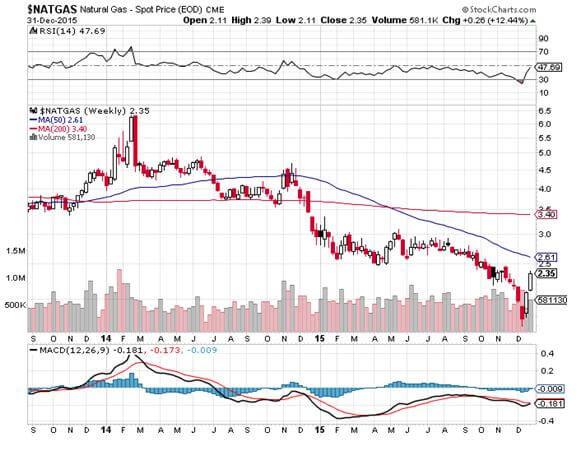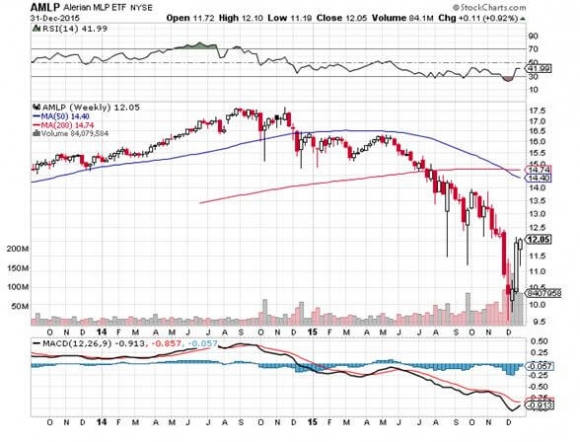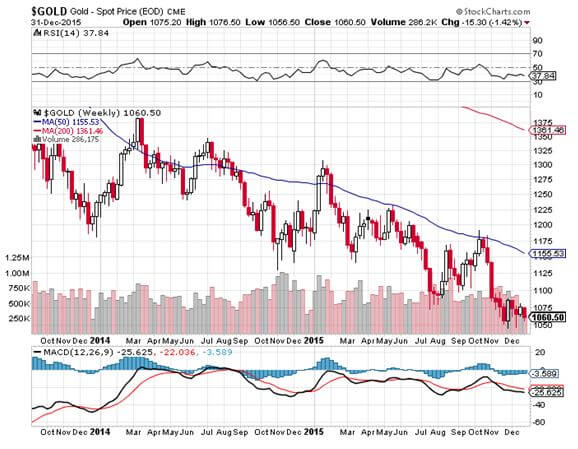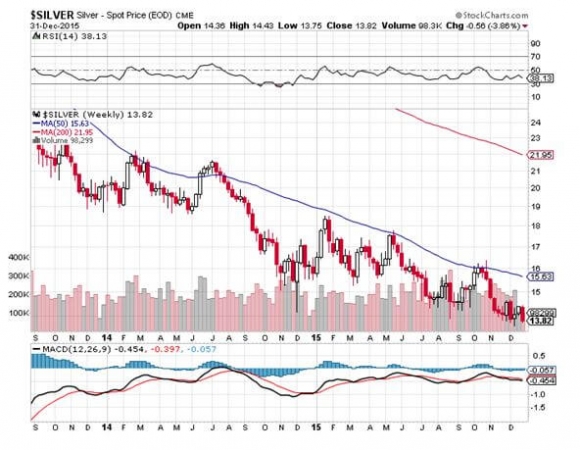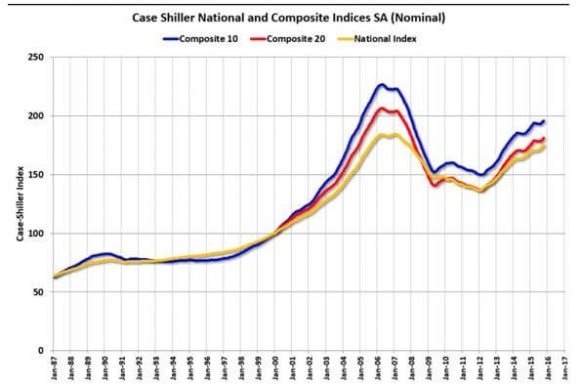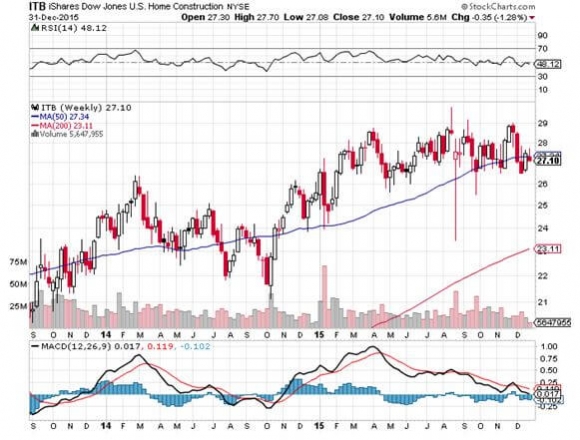Global Market Comments
July 2, 2018
Fiat Lux
Featured Trade:
(THE MARKET OUTLOOK FOR THE WEEK AHEAD, OR THE FUTURE IS HAPPENING FAST),
(HOG), (TLT), (ROM), (MU), (NVDA), (LRCX),
(SPY), (AMZN), (NFLX), (EEM), (UUP), (WBA),
(THE WORST TRADE IN HISTORY), (AAPL)
Posts
I feel like I'm living life in fast forward these days.
First we got a slap across the face with a wet mackerel on Monday with a 328 plunge in the Dow Average on yet another trade war escalation.
Harley Davidson (HOG) said it was moving a factory out of the country to bypass new European duties imposed in response to ours. If Harley is doing this you can bet there are 10,000 other companies thinking about it.
And even though robust economic growth should assure us that we remain in a new bear market for bonds, traders think otherwise. A 10-year Treasury bond (TLT) yield at 2.81% says that we're already in the next recession, we just don't know it yet.
As always happens with the ebb and flow of the trade war, technology got hammered. My favorite early retirement vehicle, the ProShares Ultra Technology 2X ETF (ROM), plunged some 11.19% to an even $100. Chip stocks such as Micron Technology (MU) and Lam Research (LRCX) get particularly hurt as China buys 80% of their processors from the U.S.
In the meantime, Tesla (TSLA) continues its phoenixlike rise from the ashes yet again, burning the shorts for the umpteenth time. The shares are now taking another run at a new all-time high. You would think people would learn but they don't. Einstein's definition of insanity is repeating the same thing over and over again and expecting a different result.
While bearish analysts predicted the imminent demise of the company, I saw a steady stream of trucks delivering new Tesla 3s from the Fremont factory while driving back from Los Angeles last weekend. Nothing beats on-the-ground research.
I'm sorry, but there is definite disconnect from reality with this company. The most hated company in America has produced the fifth best performing stock in over the past eight years, up more than 2,000%. I guess that's what happens when you disrupt big oil, Detroit, the U.S. dealer network, and the entire advertising industry all at the same time.
Interestingly, we caught three of the five best performers early on, including Tesla, NVIDIA (NVDA), and Netflix (NFLX).
Emerging markets (EEM) continue their death spiral, pummeled by the twin threats of trade wars and a soaring dollar (UUP). Most big emerging companies have their debt in dollars.
Sometimes you have to forget what you know to make money, and that has certainly been the case for me with emerging countries, where I spent a large part of my life.
The future is happening fast. Amazon (AMZN) single-handedly demolished the drug sector when it announced its takeover of online pharmacy company PillPack. The traditional brick-and-mortar retail pharmacy sector lost $9 billion in market capitalization just on the announcement. Walgreens (WBA) alone dropped a gut churning 10%.
If anyone can slash America's bloated health care bill it is Jeff Bezos. Just ask any former bookseller or toy maker.
And for a final middle finger salute to investors, the president said he wants to withdraw from the World Trade Organization, which the U.S. itself created after WWII. That means the United Nations is next on the chopping block.
America is rapidly becoming rogue nation No. 1, the next failed state. And failed states don't have great stock markets. Just check out the Somalia Stock Exchange.
They net of all of this is that the rest of the global economy is rolling over like the Bismarck, while the U.S. remains a sole beacon of strength. That's not good when half of S&P 500 earnings come from abroad.
However, that strength is based on a temporary one-time-only stimulus from massive deficit spending and corporate tax cuts that runs out of juice next year.
So keep tap dancing on the edge of the Grand Canyon. We'll miss you when you're gone. And before you ask, the best hedge in this kind of market is cash, which has huge option value that almost no one recognizes.
Despite all the chaos, uncertainty, and massive headline risk, I managed to tiptoe between the raindrops, keeping the Mad Hedge Fund Trader Alert Service performance just short of a new all-time high.
I closed out the month of June at a healthy 4.45%, my 2018 year-to-date performance rose to 24.82% and my 8 1/2-year return catapulted to 301.29%. The Averaged Annualized Return stands at 35.10%. The more narrowly focused Mad Hedge Technology Fund Trade Alert performance is annualizing now at an impressive 38.69%.
This coming holiday shortened week will be all about the jobs, jobs, jobs. Also, the Fed will raise interest rates by 25 basis points on Wednesday to an overnight rate of 2.00%.
On Monday, July 2, at 9:45 AM, the May PMI Manufacturing Index is out.
On Tuesday, July 3, at 10:00 AM, the May Factory Orders are published.
On Wednesday, July 4, U.S. markets are closed for Independence Day. I will be watching the fireworks display over New York's Hudson River from the top of a Midtown Manhattan skyscraper.
Thursday, July 5, sees a huge bunching up of data thanks to the Fourth of July. It leads with the ADP Employment Report for private sector jobs at 8:15 AM EST. The Weekly Jobless Claims follow at 8:30 AM EST, which saw a rise of 9,000 last week to 227,000. Also announced is the all-important 25 basis point interest rate rise from the Federal Reserve and the FOMC Minutes at 2:00 PM, a reading of what was discussed at the last Fed meeting.
On Friday, July 6 at 8:30 AM EST, we get the June Nonfarm Payroll Report. Then the Baker Hughes Rig Count is announced at 1:00 PM EST. I will be sipping a glass of champagne as I board the Queen Mary 2 at the Brooklyn Cruise Terminal. I look forward to all those who signed up for my Seminar at Sea.
As for me, I will be hurriedly packing for the 2018 Mad Hedge European Tour.
Unfortunately, traveling in the grand style of the 19th century Belle Epoque involves bringing 200 pounds of luggage.
Now where are those darn black dress socks? And why am I missing a stud for my formal shirt?
Good Luck and Good Trading.
Time to Get Off the Merry-Go-Round
Global Market Comments
May 25, 2018
Fiat Lux
Featured Trade:
(FRIDAY, AUGUST 3, 2018, AMSTERDAM, THE NETHERLANDS GLOBAL STRATEGY DINNER),
(MAY 23 BIWEEKLY STRATEGY WEBINAR Q&A),
(TLT), (SPY), (TSLA), (EEM), (USO), (NVDA),
(GILD), (GE), (PIN), (GLD), (XOM), (FCX), (VIX)
Below please find subscribers' Q&A for the Mad Hedge Fund Trader May 23 Global Strategy Webinar with my guest and co-host Bill Davis of the Mad Day Trader.
As usual, every asset class long and short was covered. You are certainly an inquisitive lot, and keep those questions coming!
Q: Would you short Tesla here?
A: Tesla (TSLA) is on the verge of making the big leap to mass production, so they're in somewhat of an in-between time from a profit point of view, and the burden of proof is on them. Elon Musk is notorious for squeezing shorts. I would not want to bet him.
Musk has been successfully squeezing shorts for 10 years now, from the time the stock was at $16.50 all the way up to $392. So, I would not short Tesla. Buy the car but don't play in the stock; it's really a venture capital play that happens to have a stock listing because so many people are willing to back his vision of a carbon-free economy.
Q: What is your takeaway on the China trade war situation?
A: The Chinese said "no," and that is positive for economic growth. Anything that enhances international trade is good for growth and good for the stock market; anything that damages international trade is bad for corporate earnings and bad for the stock market. So, the China win in the trade war is essentially positive, but I don't think we'll see that reflected in stock prices until the end of the year.
Q: What do you think about Gilead Sciences?
A: I don't really want to touch Gilead (GILD), or the entire sector, for that matter. We shouldn't be seeing such a poor performance at this point in the market. Health care has been dead for a long time, and you would have expected a rally based purely on fundamentals; they are delivering good earnings, it's just not reflected in the price action of the stocks. I think with no new money going into the market, there's nothing to push up other sectors; it's really become a "technology on and off" market. Health care doesn't fit anywhere in that world.
Q: Do you still like Nvidia?
A: I love Nvidia (NVDA). The chip sector still has another year to go. Nvidia has the high value-added product, and I'm looking for $300 dollars a share sometime this year/next year. The reason the stock hasn't really been moving is that it's over-owned; too many people know about the Nvidia story, which continues to go "gangbusters," so to speak. The chairman has also put out negative comments on short-term inventories, which have been a drag.
Q: Treasuries (TLT) are over 3%. Will they go over 3.5% by then end of this year?
A: I would say yes. Since that is only 50 basis points away from the current market, I would say it's a pretty good bet. So, if you get any good entry points you can do LEAPS going out to next year, betting that Treasuries will not only be below $116 by the end of the year, but they'll probably be below 110. And that would give you a very good high return LEAP with a yield of 50% in the next, say 8 months. By the way, if the Treasury yield rises to 4% that takes the (TLT) down to $98!
Q: Any chance General Electric will be acquired this year?
A: Absolutely not. General Electric (GE) worth far more if you break it up into individual pieces and sell them. Some parts are very profitable like jet engines and Baker Hughes, while other parts, like their medical insurance exposure, are awful.
Q: What do you see about the India ETF?
A: The one I follow is the PowerShares India Portfolio ETF (PIN) and we love it long term. Short term, they can take some pain with the rest of the emerging markets.
Q: What should I do with my January 2019 Gold calls?
A: I would sell them. It's not worth hanging on to here with too many other better things to do in stocks.
Q: Would you continue to hold ExxonMobile?
A: I would not. If you were lucky enough to get in at the bottom on ExxonMobile (XOM). I would be taking profits here. I'm not sure how long this energy rally will last, especially if the global economic slowdown continues.
Q: Is Freeport-McMoRan (FCX) a buy?
A: Yes, but only buy the dip in the recent range, so you don't get stopped out when the price goes against you. Commodities are the best performing asset class this year and that should continue.
Q: How high is oil (USO) headed?
A: I think we're probably peaking out short of $80 a barrel currently unless we get a major geopolitical event. Then it could go up to $100 very quickly and trigger a recession.
Q: Are you looking to buy the Volatility Index here?
A: Buy the next dip, but the trick with (VIX) is buying after it sits on a bottom for about five days. You also want to buy it when stocks (SPY) are at the top of a range, like yesterday.
Q: How long do you think the market will be range-bound for?
A: My bet is at least three months, and possibly four or five. We should start to anticipate the outcome of the midterm congressional elections in September/October; that's when you get your upside breakout.
Q: Is Gold (GLD) not worth buying since Bitcoin has taken over market share from Gold buyers?
A: Essentially, yes. That's probably why you're not getting these big spikes in Gold like you're used to. Instead, you're getting them in Bitcoin. Bitcoin is clearly stealing Gold's thunder. That's a major reason why we haven't been chasing Gold this year.
Q: After the emerging market sell-off, is it a good time to go in?
A: No, I think the emerging market (EEM) sell-off is being created by rising interest rates and a strong dollar. I don't see that ending anytime soon. In a year let's take another look in emerging markets. By then overnight Fed funds should be at 2.50% to 2.75%.
Global Market Comments
May 15, 2018
Fiat Lux
Featured Trade:
(FRIDAY, JUNE 15, 2018, DENVER, CO, GLOBAL STRATEGY LUNCHEON)
(GET READY FOR THE COMING GOLDEN AGE),
(SPY), (INDU), (FXE), (FXY), (UNG), (EEM), (USO),
(TLT), (NSANY), (TSLA)
I believe that the global economy is setting up for a new golden age reminiscent of the one the United States enjoyed during the 1950s, and which I still remember fondly.
This is not some pie in the sky prediction. It simply assumes a continuation of existing trends in demographics, technology, politics, and economics. The implications for your investment portfolio will be huge.
What I call "intergenerational arbitrage" will be the principal impetus. The main reason that we are now enduring two "lost decades" of economic growth is that 80 million baby boomers are retiring to be followed by only 65 million "Gen Xers."
When the majority of the population is in retirement mode, it means that there are fewer buyers of real estate, home appliances, and "RISK ON" assets such as equities, and more buyers of assisted living facilities, health care, and "RISK OFF" assets such as bonds.
The net result of this is slower economic growth, higher budget deficits, a weak currency, and registered investment advisors who have distilled their practices down to only municipal bond sales.
Fast forward six years when the reverse happens and the baby boomers are out of the economy, worried about whether their diapers get changed on time or if their favorite flavor of Ensure is in stock at the nursing home.
That is when you have 65 million Gen Xers being chased by 85 million of the "millennial" generation trying to buy their assets.
By then we will not have built new homes in appreciable numbers for 20 years and a severe scarcity of housing hits. Residential real estate prices will soar. Labor shortages will force wage hikes.
The middle-class standard of living will reverse a then 40-year decline. Annual GDP growth will return from the current subdued 2% rate to near the torrid 4% seen during the 1990s.
The stock market rockets in this scenario. Share prices may rise very gradually for the rest of the teens as long as tepid 2% growth persists. A 5% annual gain takes the Dow to 28,000 by 2019.
After that, after a brief dip, we could see the same fourfold return we saw during the Clinton administration, taking the Dow to 100,000 by 2030. If I'm wrong, it will hit 200,000 instead.
Emerging stock markets (EEM) with much higher growth rates do far better.
This is not just a demographic story. The next 20 years should bring a fundamental restructuring of our energy infrastructure as well.
The 100-year supply of natural gas (UNG) we have recently discovered through the new "fracking" technology will finally make it to end users, replacing coal (KOL) and oil (USO). Fracking applied to oilfields is also unlocking vast new supplies.
Since 1995, the United States Geological Survey estimate of recoverable reserves has ballooned from 150 million barrels to 8 billion. OPEC's share of global reserves is collapsing.
This is all happening while automobile efficiencies are rapidly improving and the use of public transportation soars.
Mileage for the average U.S. car has jumped from 23 to 24.7 miles per gallon in the past couple of years, and the administration is targeting 50 mpg by 2025. Total gasoline consumption is now at a five-year low.
Alternative energy technologies will also contribute in an important way in states such as California, accounting for 30% of total electric power generation by 2020, and 50% by 2030.
I now have an all-electric garage, with a Nissan Leaf (NSANY) for local errands and a Tesla Model S-1 (TSLA) for longer trips, allowing me to disappear from the gasoline market completely. Millions will follow. The net result of all of this is lower energy prices for everyone.
It will also flip the U.S. from a net importer to an exporter of energy, with hugely positive implications for America's balance of payments. Eliminating our largest import and adding an important export is very dollar bullish for the long term.
That sets up a multiyear short for the world's big energy consuming currencies, especially the Japanese yen (FXY) and the Euro (FXE). A strong greenback further reinforces the bull case for stocks.
Accelerating technology will bring another continuing positive. Of course, it's great to have new toys to play with on the weekends, send out Facebook photos to the family, and edit your own home videos.
But at the enterprise level this is enabling speedy improvements in productivity that are filtering down to every business in the U.S., lowering costs everywhere.
This is why corporate earnings have been outperforming the economy as a whole by a large margin.
Profit margins are at an all-time high. Living near booming Silicon Valley, I can tell you that there are thousands of new technologies and business models that you have never heard of under development.
When the winners emerge, they will have a big cross-leveraged effect on economy.
New health care breakthroughs will make serious disease a thing of the past, which are also being spearheaded in the San Francisco Bay area.
This is because the Golden State thumbed its nose at the federal government 10 years ago when the stem cell research ban was implemented. It raised $3 billion through a bond issue to fund its own research, even though it couldn't afford it.
I tell my kids they will never be afflicted by my maladies. When they get cancer in 20 years they will just go down to Wal-Mart and buy a bottle of cancer pills for $5, and it will be gone by Friday.
What is this worth to the global economy? Oh, about $2 trillion a year, or 4% of GDP. Who is overwhelmingly in the driver's seat on these innovations? The USA.
There is a political element to the new golden age as well. Gridlock in Washington can't last forever. Eventually, one side or another will prevail with a clear majority.
This will allow the government to push through needed long-term structural reforms, the solution of which everyone agrees on now, but for which nobody wants to be blamed.
That means raising the retirement age from 66 to 70 where it belongs and means-testing recipients. Billionaires don't need the maximum $30,156 annual supplement. Nor do I.
The ending of our foreign wars and the elimination of extravagant unneeded weapons systems cuts defense spending from $800 billion a year to $400 billion, or back to the 2000, pre-9/11 level. Guess what happens when we cut defense spending? So does everyone else.
I can tell you from personal experience that staying friendly with someone is far cheaper than blowing them up.
A Pax Americana would ensue.
That means China will have to defend its own oil supply, instead of relying on us to do it for them. That's why they have recently bought a second used aircraft carrier. The Middle East is now their headache.
The national debt then comes under control, and we don't end up like Greece.
The long-awaited Treasury bond (TLT) crash never happens. The Fed has already told us as much by indicating that the Federal Reserve will only raise interest rates at an infinitesimally slow rate of 25 basis points a quarter.
Sure, this is all very long-term, over-the-horizon stuff. You can expect the financial markets to start discounting a few years hence, even though the main drivers won't kick in for another decade.
But some individual industries and companies will start to discount this rosy scenario now.
Perhaps this is what the nonstop rally in stocks since 2009 has been trying to tell us.
Dow Average 1908-2018
Another American Golden Age is Coming
April 27, 2018
Fiat Lux
Featured Trade:
(THURSDAY, JUNE 14, 2018, NEW YORK, NY, GLOBAL STRATEGY LUNCHEON)
(APRIL 25 BIWEEKLY STRATEGY WEBINAR Q&A),
(TLT), (TBT), (GOOGL), (NVDA), (PIN),
(SPY), (C), (AMD), (EEM), (HEDJ)
Below please find subscribers Q&A for the Mad Hedge Fund Trader April Global Strategy Webinar with my guest co-host Mike Pisani of Smart Option Trading.
As usual, every asset class long and short was covered. You are certainly an inquisitive lot, and keep those questions coming!
Q: Are you out of Alphabet (GOOGL) and Microsoft (MSFT)?
A. I'm out of Alphabet and I'm in Microsoft, but only for the very short term. I'm waiting for another big meltdown day to go back and buy everything back because I think the FANGs and technology in general are still in a secular bull market.
Q. Are Advanced Micro Devices (AMD) and NVIDIA (NVDA) affected by the underperformance of Bitcoin?
A. They are. Bitcoin has been an important part of the chip story for the last two years because mining, or the creation of bitcoins, creates enormous demand for chips to do the processing. I think selling in bitcoin is over for the time being. You had a $25 billion in capital gains taxes that had to be paid by April 15.
People were paying those bills by selling their bitcoins. That's over now, and bitcoin is rallied about 30% since Tax Day because of that. So, yes, bitcoin is getting so big that it is starting to affect the chip sector meaningfully. That is another reason why we see secular long-term growth in the entire chip sector.
Mike Pisani: Interesting take on bitcoin today, and I've been with you on it. I think the worst of it is over; it's going to go. Today is the largest volume day we've seen on it so far. We're up over 15,500 contracts traded.
Q: If you're 100% cash, is now a good time to commit funds to the equity market?
A. Franz, I would say nein. Absolutely not. 2009 was the time to commit funds to the equity market. If you're 100% cash now I would stay out for the next six months. We may get a good entry point over the summer or the fall. I'll let you know when that happens because I will be jumping back in myself.
But right now, a week ahead of the worst six months of equity investment of the year, I would stay away and do research instead. Read your Mad Hedge Fund Trader letters. Build a list of names that you're going to buy on the next meltdown and practice buying meltdowns with your practice account, which doesn't use real money.
There's a lot of things you can get ready to do for the next leg up in the bull market, but buying right now, NO! I would put that in the category of, "Is it time to start shorting bonds question?" that we got a few minutes ago.
Q: Why did tech stocks sell off when they have great earnings results?
A: It's called, "Buy the rumor, sell the news." So many people already own the stocks and were expecting good earnings that there was no surprise when they were announced. These are some of the most over-owned stocks in history.
Everybody in the world owns them. Many people have multiple weightings in them, so when we enter a high-risk macro environment, which we have now, you want to get rid of the most over-owned stocks. That is exactly why all of these stocks that have had great runs are selling off, even though they have great earnings report.
Q: Are financials a good play here with interest rates rising though 3%?
A. Normally I would say yes. However, the macro background for the general market are so negative they are overwhelming any positive fundamentals specific to individual sectors like banks and stocks like Citigroup (C). By the way, financials all reported great results and got killed, so that is why I bailed out of my (C) position this morning at around cost. If you throw the best news in the world on a stock and it won't go up, it's time to get out of there.
Q: Would an unleveraged inverse ETF like the ProShares Short S&P 500 ETF (SH) be good at a spike even now?
A. Yes, but when I say spike up better expect at least 20 (SPY) points or 1,000 Dow points. All these downside ETFs are great but you've got to get in at the right price. You know as they say in trading school, the profit is always made on the "BUY" and not on the "SELL."
So, if you can get on one of these super spikes up on the short side that is a great trade. So is the ProShares Ultra Short ETF (SDS) if you want to do the 2X leverage short fund. We've recently started doing this every month. We've been shorting (SPY)s and buying (VIX) on every one of these spikes up, and it's been working like a charm.
Q: Here's the best question of the day. Your timing has been perfect says Mary in Chicago, Ill.
A: Well, I'll take that kind of question all day long. Thank you very much. You're too nice to do that.
Q: Richard is asking would you buy an NVIDIA (NVDA) LEAP?
A: I would wait for meltdown days. Remember this is a market that gives you lots of meltdown days. Just wait for the next presidential tweet and you might get another 600-700-point dip in the markets. Those are the days you buy LEAPS. You don't have to get buy writing Trade Alerts like I do. You can just enter a limit order in your account. Put it as a stupidly low level to "BUY" and you may get hit. And that's where you really make the big money in this kind of market.
Q: Is there a good one- or two-month trade in Amazon?
A: Yeah, Paul, with this volatility you can pick a big winner like Amazon and you know to buy the 250-point dips and sell the rallies. These ranges are so wide now that even a beginner can make money. So, I would say you have to wait until after tomorrow on Amazon and let them get their earnings out. We know they're going to be great. They're doing home deliveries now to your car.
Q: Can long bond interest rates go up to 4%, and if that happens what would the market do?
A: Yes, they can go up to 4%, and I expect them to probably do that next year. What will it do to the market? Answer: Cause a bear market and a recession. Is that answer clear enough? My bet is that interest rates cap in this cycle much lower than they did in past cycles, maybe 4%-5%. We have been used to zero cost of money for so long that a move to 4% would be like stabbing somebody in the chest. People are much less able to deal with rising rates than they ever have been in the past, so watch this space.
Q: Should I buy the ProShares Ultra Short Treasury ETF (TBT) or the iShares 20+ Year Treasury Bond Fund (TLT)?
A: Brad, it's really is a leverage question for you. The (TLT) is 1X; the TBT is 2X, so I would be taking profits on the (TBT) here and then buying a couple of points lower. Or if you want to keep it for the long term you can but remember the cost of carry on the TBT is around 7% a year.
Q: Yves in Paris, France is asking: What possible scenario will you see material wage growth that could lead to higher inflation?
A: We're starting to see that now with the ultra-low unemployment rates. People are having great difficulty hiring anyone in technology. But at the minimum wage level there seems to be plenty of supply. The other possibility is that the cost of everything else goes up but wages, because technology is replacing jobs so fast there may never be any increase in wages.
So, we will get inflation, but nothing like the inflation we saw in the past driven by rising wages, commodity prices, oil prices, and interest rates. Yes, money is a commodity, which can add quite a lot to the cost of leveraged companies like airlines, REITs, and so on.
Q: Will rising interest rates force the US dollar up?
A. The answer is yes! It has been a long time coming, but if rates continue to rise from here, you can expect that to lead to a continuously rising dollar and falling foreign currencies, and that will become a major drag on the economy and corporate earnings going forward.
Q: When is a good time to buy TIPS?
A: Just like your Treasury bond short, I would buy Treasury Inflation Protected Securities (TIPS) on the next rally in bond prices (TLT) and dip in yields. That will give you a decent entry point. That said, TIPS have been a horrible performer for the last 10 years because there has just been no inflation. A lot of people just keep TIPS as a hedge in their portfolio and it just costs them money every year.
Q: Which could blow up, Brad wants to know, TBT or TLT?
A: The easy answer there is probably neither. But if I had to pick between the two, the (TBT) would be the one to blow up because it's a 2X and has a lot less liquidity. So, I can't image in what world has (TBT) blowing up, but then I don't watch zombie TV shows either.
Q: I think US equities are expensive. Are emerging markets (EEM) or Europe (HEDJ) a better bet for the rest of the year?
A: I would say yes. Because if interest rates here in the US go higher that means a stronger dollar. That means a weaker US stock market. Because US companies are punished by a rising dollar. And European and Asian companies benefit from a rising dollar and falling home currencies, so that makes Europe the first choice of any of the global markets.
Q: Does oil going to $100 have a chance of bringing down the US economy?
A: Absolutely yes. If oil prices don't start to slow down, they will start having a big impact on the economy because that means rising prices for any energy consumer, which is you and me.
With no ability to offset that by rising prices of your products that would put a squeeze on any oil consuming industry, which is why things like the transports and consumer staples have been performing so poorly. If we get to $100, then you're really looking at a full-on recession and bear market for stocks. By bear market I mean down 25% or more in stocks.
Q: How do you see the India ETF?
A: We like it. India is the No. 1 pick of any hedge fund investor in emerging markets, and the ETF you can buy there is the PowerShares India Portfolio ETF (PIN).
Boy, did we have a great run in emerging markets during the 2000s!
A global commodity boom caused many of these markets to rise tenfold or more.
Go back to the earliest newsletters published by the Diary of a Mad Hedge Fund Trader in 2008, and you will find them chock full of recommendations to buy hard assets, emerging market ETFs, debt, and currencies.
As former colonies, many of these countries still base their economies on production of the precious and base metals, energy, and foodstuffs they once supplied the motherland.
And as a former correspondent for The Economist magazine covering this territory, I knew them well.
Then in 2011, the party abruptly ended, and a vicious five-year bear market ensued.
Oil peaked first, eventually nosediving some 82.5%, from $149 to $26.
Remember Dr. Copper, the only commodity with a PhD in economics? He gave up 57.9%.
And gold, that ultimate store of value for Armageddonists and conspiracy theorists everywhere? It plunged by 48.2%.
There are still a lot of unhappy American gold eagles sitting in bank deposit boxes around the country gathering dust, thanks to those ridiculous theories.
It didn?t help that a raging bull market in developed market government bonds sucked even more money out of these beleaguered countries.
The Emerging market debt ETF (ELD), collapsed by 32%. The emerging market currency ETF (CEW) dropped by 35.5%.
My long-term subscribers can already see where this is going.
The wonderful thing about all of these cross asset class declines is that they have a leveraged effect on each other.
So while the ishares MSCI Emerging Market ETF (EEM) fell by 38.9%, in dollar terms it declined by more than half.
Then a funny thing happened during the second week of January 2016.
Gold took off like a rocket.
It was closely followed by silver, oil copper, palladium, platinum, and iron ore. Only the ags failed to participate.
The bull market was back!
Portfolio managers were given a simple choice.
Should they chase developed market assets trading at all time highs with yields approaching zero. Or should they load up on emerging assets at decade lows with yields approaching 12%?
Yields that high can cover up a lot of mistakes and preserve principal.
If you voted for the latter, you deserve a brass ring.
Here we are some eight months later, and the emerging bull market is alive and well. In fact, it is about to take another substantial new leg upwards.
My money is on emerging market handily beating the major US stock indexes for the rest of 2016.
The reasons for this are many and complex.
For a start, the iShares MSCI Emerging Market ETF (EEM) is still cheap.
It has to rise by 21.6% just to get back up to its 2011 highs. As a laggard play, it is beyond reproach.
In emerging market debt, the positive carry is enormous.
The Wisdom Tree Emerging Market Local Debt Fund (ELD) is yielding 5.46%, some 390 basis points high than the ten year Treasury bond (TLT).
And if you want to go with individual rifle shots in single countries, you can earn as much as 11.90% in Brazil.
The ?lower for longer? philosophy of the Fed just shines a giant great spotlight on this paper.
And guess what happened while you weren?t looking?
Emerging market debt has ?emerged.?
Five years of balance sheet repair means their credit quality has improved.
Local credit markets have grown up too.
Once dominated by huge inflows and outflows from foreign investors, markets are now much more in balance, thanks to the rise of? local institutional investors and pension funds.
The fundamentals of these countries have been steadily improving.
Falling currencies gave them a competitive advantage that allowed? trade surpluses to dramatically improve.
Political stability is improving. During my journalist days, you used to be able to count on one good coup d??tat or revolution in the area a year. No more.
Many business friendly, pro trade governments have come into power, such as in Argentina, India and Peru.
Emerging market GDP growth rates are still double those found in developed markets.
Markets themselves are improving. Spreads for stocks and bonds are now much tighter in emerging markets and liquidity has improved. They are ?roach motel? markets no more, where you can check in, but you can?t check out.
Get this one right, and the cross asset class hockey stick effect we saw on the downside will work just as well on the upside.
In short, there is a lot more to the emerging market dollar than there used to be. It is just a matter of time before financial markets figure this out.
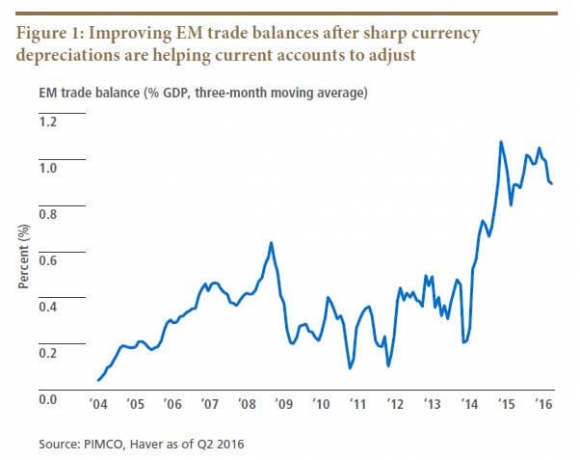
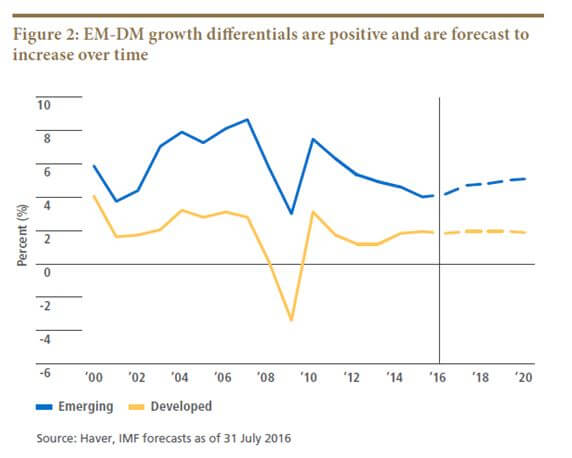
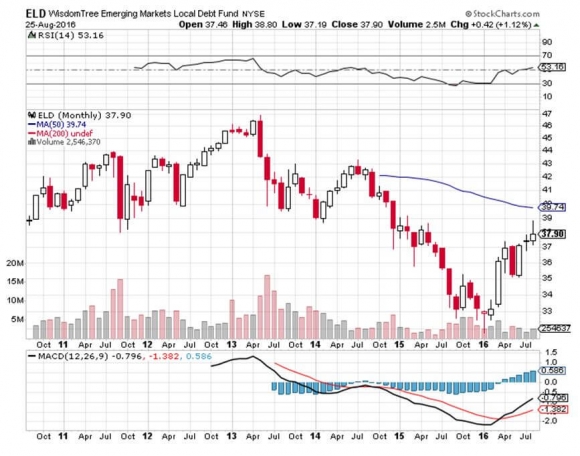
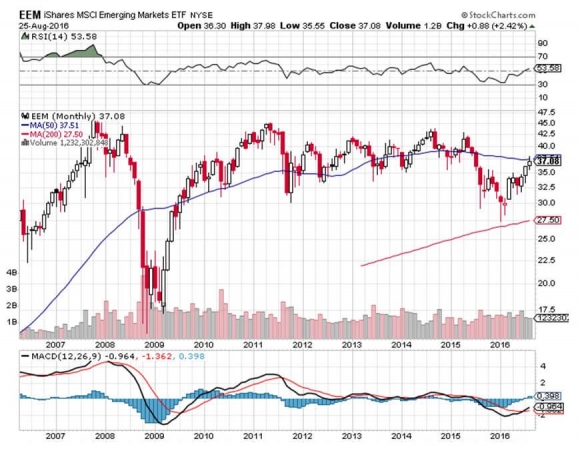
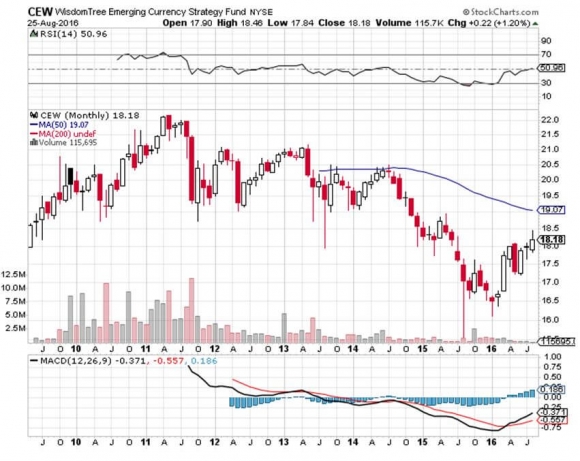
Looking for the Next Bull Market
I am once again writing this report from a first class sleeping cabin on Amtrak?s California Zephyr.
By day, I have two comfortable seats facing each other next to a panoramic window. At night, they fold into bunk beds, a single and a double. There is a shower, but only Houdini could get in and out of it.
I am not Houdini, so I go downstairs to use the larger public showers.
We are now pulling away from Chicago?s Union Station, leaving its hurried commuters, buskers, panhandlers, and majestic great halls behind. I love this building as a monument to American accomplishment.
I am headed for Emeryville, California, just across the bay from San Francisco. That gives me only 56 hours to complete this report.
I tip my porter, Raymond, $100 in advance to make sure everything goes well during the long adventure, and to keep me up to date with the onboard gossip.
The rolling and pitching of the car is causing my fingers to dance all over the keyboard. Spellchecker can catch most of the mistakes, but not all of them.
Thank goodness for small algorithms.
As both broadband and cell phone coverage are unavailable along most of the route, I have to rely on frenzied searches during stops at major stations along the way to chase down data points.
You know those cool maps in the Verizon stores that show the vast coverage of their cell phone networks? They are complete BS.
Who knew that 95% of America is off the grid? That explains a lot about our country today. I have posted many of my better photos from the trip below, although there is only so much you can do from a moving train and an iPhone 6.
After making the rounds with strategists, portfolio managers, and hedge fund traders, I can confirm that 2015 was one of the toughest to trade for careers lasting 30, 40, or 50 years. Even the stay-at-home index players had their heads handed to them.
With the Dow gaining 3.1% in 2015, and S&P 500 almost dead unchanged, this was a year of endless frustration. Volatility fell to the floor, staying at a monotonous 12% for eight boring consecutive months before spiking repeatedly many times to as high as 52%. Most hedge funds lagged the index by miles.
My Trade Alert Service, hauled in an astounding 38.8% profit, at the high was up 48.7%, and has become the talk of the hedge fund industry.
If you think I spend too much time absorbing conspiracy theories from the Internet, let me give you a list of the challenges I see financial markets facing in the coming year:
The Four Key Variables for 2016
1) Will the Fed raise interest rates more or not?
2) Will China?s emerging economy see a hard or soft landing?
3) Will Japanese and European quantitative easing increase, or remain the same?
4) Will oil bottom and stay low, or bounce hard?
Here are your answers to the above: no, soft, more later, bounce hard later.
There you go! That?s all the research you have to do for the coming year. Everything else is a piece of cake.
The Ten Highlights of 2015
1) Stocks will finish higher in 2016, almost certainly more than the previous year, somewhere in the 5% range and 7% with dividends. Cheap energy, a recovering global economy, and 2-3% GDP growth, will be the drivers. However, this year we have a headwind of rising interest rates and falling multiples.
2) Expect stocks to take a 15% dive. That gives us a -15% to +5% trading range for the year. Volatility will remain permanently higher, with several large spikes up. That means you are going to have to pedal harder to earn your crust of bread in 2016.
3) The Treasury bond market will modestly grind down, anticipating the next 25 basis point rate rise from the Federal Reserve, and then the next one after that.
4) The yen will lose another 5% against the dollar.
5) The Euro will fall another 5%, doing its best to hit parity with the greenback, with the assistance of beleaguered continental governments.
6) Oil stays in a $30-$60 range, showering the economy with hundreds of billions of dollars worth of de facto tax cuts.
7) Gold finally bottoms at $1,000 after one more final flush, then rallies $250. (My jeweler was right, again).
8) Commodities finally bottom out, thanks to new found strength in the global economy, and begin a modest recovery.
9) Residential real estate has made its big recovery, and will grind up slowly from here for years.
10) The 2016 presidential election will eat up immense amounts of media and research time, but will have absolutely no impact on financial markets. Give your money to charity instead.
The Thumbnail Portfolio
Equities - Long. A rising but high volatility year takes the S&P 500 up to 2,200. Technology, biotech, energy, solar, consumer discretionary, and financials lead. Energy should find its bottom, but later than sooner.
Bonds - Short. Down for the entire year, but not by much, with long periods of stagnation.
Foreign Currencies - Short. The US dollar maintains its bull trend, especially against the Yen and the Euro, but won't gain nearly as much as in 2015.
Commodities - Long. A China recovery takes them up eventually.
Precious Metals - Buy as close to $1,000 as you can. We are overdue for a trading rally.
Agriculture - Long. El Nino in the north and droughts in Latin American should add up to higher prices.
Real estate - Long. Multifamily up, commercial up, single family homes up small.
1) The Economy - Fortress America
I think real US economic growth will come in at the 2.5%-3% range.
With a generational demographic drag continuing for five more years, don?t expect more than that. Big spenders, those in the 46-50 age group, don?t return in larger numbers until 2022.
But this negative will be offset by a plethora of positives, like hyper-accelerating technology, global expansion, and the lingering effects of the Fed?s massive five year quantitative easing.
US corporate profits will keep pushing to new all time highs. But this year we won?t be held back by the collapsing economies of Europe, China, and Japan, which subtracted about 0.5% from American economic growth, nor weak energy.
US Corporate earnings will probably come in at $130 a share for the S&P 500, a gain of 10% over the previous year. During the last six years, we have seen the most dramatic increase in earnings in history, taking them to all-time highs.
Technology and dramatically lower energy costs are the principal sources of profit increases, which will continue their inexorable improvements. Think of more machines and software replacing people.
You know all of those hundreds of billions raised from technology IPO?s in 2015? Most of that is getting plowed right back into new start ups, increasing the rate of technology improvements even further, and the productivity gains that come with it.
We no longer have the free lunch of zero interest rates. But the cost of money will rise so slowly that it will barely impact profits. Deflation is here to stay. Watch the headline jobless rate fall below 5% to a full employment economy.
Keep close tabs on the weekly jobless claims that come out at 8:30 AM Eastern every Thursday for a good read as to whether the financial markets will head in a ?RISK ON? or ?RISK OFF? direction.
 A Rocky Mountain Moose Family
A Rocky Mountain Moose Family
2) Equities (SPX), (QQQ), (AAPL), (XLF), (BAC), (EEM),(EWZ), (RSX), (PIN), (FXI), (TUR), (EWY), (EWT), (IDX)
For the first time in seven years, earnings multiples are going to fall, but not by much. That is the only possible outcome in a world with rising interest rates, however modestly.
If multiples fall by 5%, from the current 18X to 17.1X, profits increase by 10%, and you throw in a 2% dividend, you should net out a 7% return by the end of the year.
S&P 500 earnings fell by 6% in 2015, but take out oil and they grew by 5.6%. In 2016, energy will be a lesser drag, or not at all. That makes my 10% target doable.
That is not much of a return with which to take on a lot of risk. But remember, in a near zero interest rate world, there is nothing else to buy.
This is not an outrageous expectation, given the 10-22 earnings multiple range that we have enjoyed during the last 30 years.
The market currently trades around fair value, and no market in history ever peaked out here. An overshoot to the upside, often a big one, is mandatory. Yet, that is years off.
After all, my friend, Janet Yellen, is paying you to buy stock with cheap money, so why not? Borrowing money at close to zero and investing in 2% dividend paying stocks has become the world?s largest carry trade.
Rising interest rates will have one additional worrying impact on stock prices. They will pare back mergers and acquisitions and corporate buy backs in 2016.
Together these were the sources of all new net buying of stocks in 2015, some $5.5 trillion worth. Call it financial engineering, but the market loves it.
Although energy looks terrible now, it could well be the top-performing sector by the end of the year, to be followed by commodities.
Certainly, every hedge fund and activist investor out there is undergoing a crash course on oil fundamentals. After a 13-year expansion of leverage in the industry, it is ripe for a cleanout.
Solar stocks will continue on a tear, now that the 30% federal investment tax subsidy has been extended by five more years. Look at Solar City (SCTY), First Solar (FSLR), and the solar basket ETF (TAN). Revenues are rocketing and costs are falling.
After spending a year in the penalty box, look for small cap stocks to outperform. These are the biggest beneficiaries of cheap energy and low interest rates.
Share prices will deliver anything but a straight-line move. Expect a couple more 10% plus corrections in 2015, and for the Volatility Index (VIX) to revisit $30 multiple times. The higher prices rise, the more common these will become.
 Frozen Headwaters of the Colorado River
Frozen Headwaters of the Colorado River
3) Bonds ?(TLT), (TBT), (JNK), (PHB), (HYG), (PCY), (MUB), (HCP), (KMP), (LINE)
Amtrak needs to fill every seat in the dining car, so you never know who you will get paired with for breakfast, lunch, and dinner.
There was the Vietnam vet Phantom jet pilot who now refused to fly because he was treated so badly at airports. A young couple desperate to get out of Omaha could only afford seats as far as Salt Lake City, sitting up all night. I paid for their breakfast.
A retired British couple was circumnavigating the entire US in a month on a ?See America Pass.? Mennonites returning home by train because their religion forbade airplanes.
I have to confess that I am leaning towards the ?one and done? school of thought with regards to the Fed?s interest rate policy. We may see a second 25 basis point rise in June, but only if the economy takes off like a rocket and international concerns disappear, an unlikely probability.
If you told me that US GDP growth was 2.5%, unemployment was at a ten year low at 5.0%, and energy prices had just plunged by 68%, I would have pegged the ten-year Treasury bond yield at 6.0%. Yet here we are at 2.25%.
We clearly are seeing a brave new world.
Global QE added to a US profit glut has created more money than the fixed income markets can absorb.
Virtually every hedge fund manager and institutional investor got bonds wrong last year, expecting rates to rise. I was among them, but that is no excuse.
Fixed income turned out to be a winner for me in 2015, as I sold short every bond price spike from the summer onward. It worked like a charm.
You might as well take your traditional economic books and throw them in the trash. Apologies to John Maynard Keynes, John Kenneth Galbraith, and Paul Samuelson.
The reasons for the debacle are myriad, but global deflation is the big one. With ten year German bunds yielding a paltry 62 basis points, and Japanese bonds paying a paltry 26 basis points, US Treasuries are looking like a steal.
To this, you can add the greater institutional bond holding requirements of Dodd-Frank, a balancing US budget deficit, a virile US dollar, the commodity price collapse, and an enormous embedded preference for investors to keep buying whatever worked yesterday.
For more depth on the perennial strength of bonds, please click here for ?Ten Reasons Why I?m Wrong on Bonds?.
Bond investors today get an unbelievable bad deal. If they hang on to the longer maturities, they will get back only 80 cents worth of purchasing power at maturity for every dollar they invest a decade down the road.
But institutions and individuals will grudgingly lock in these appalling returns because they believe that the potential losses in any other asset class will be worse.
The problem is that driving eighty miles per hour while only looking in the rear view mirror can be hazardous to your financial health.
While much of the current political debate centers around excessive government borrowing, the markets are telling us the exact opposite.
A 2% handle on the ten-year yield is proof to me that there is a Treasury bond shortage, and that the government is not borrowing too much money, but not enough.
There is another factor supporting bonds that no one is looking at. The concentration of wealth with the 1% has a side effect of pouring money into bonds and keeping it there. Their goal is asset protection and nothing else.
These people never sell for tax reasons, so the money stays there for generations. It is not recycled into the rest of the economy, as conservative economists insist. As this class controls the bulk of investable assets, this forestalls any real bond market crash, at lest for the near term.
So what will 2016 bring us? I think that the erroneous forecast of higher yields I made last year will finally occur this year, and we will start to chip away at the bond market bubble?s granite edifice.
I am not looking for a free fall in price and a spike up in rates, just a move to a new higher trading range.
We could ratchet back up to a 3% yield, but not much higher than that. This would enable the inverse Treasury bond bear ETF (TBT) to reverse its dismal 2015 performance, taking it from $46 back up to $60.
You might have to wait for your grandchildren to start trading before we see a return of 12% Treasuries, last seen in the early eighties. I probably won?t live that long.
Reaching for yield suddenly went out of fashion for many investors, which is typical at market tops. As a result, junk bonds (JNK) and (HYG), REITS (HCP), and master limited partnerships (AMLP) are showing their first value in five years.
There is also emerging market sovereign debt to consider (PCY). If oil and commodities finally bottom, these high yielding bonds should take off on a tear.
This asset class was hammered last year, so we are now facing a rare entry point.
There is a good case for sticking with munis. No matter what anyone says, taxes are going up, and when they do, this will increase tax-free muni values.
The collapse of the junk bond market suddenly made credit quality a big deal last year. What is better than lending to the government, unless you happen to live in Puerto Rico or Illinois.
So if you hate paying taxes, go ahead and buy this exempt paper, but only with the expectation of holding it to maturity. Liquidity could get pretty thin along the way, and mark to markets could be shocking.
Be sure to consult with a local financial advisor to max out the state, county, and city tax benefits.
One question I always get asked at lunches, conferences, and lectures is what is going to happen to the budget deficit?
The short answer is that it disappears in 2018 with no change in current law, thanks to steady growth in tax revenues and no big new wars.
And Social Security? It will be fully funded by 2030, thanks to a huge demographic tailwind provided by the addition of 86 million Millennials to the tax rolls.
A bump up in US GDP growth from 2% to 4% during the 2020?s will also be a huge help, again, provided we don?t start any more wars.
It looks like I am going to be able to collect after all.
 A Visit to the 19th Century
A Visit to the 19th Century
4) Foreign Currencies (FXE), (EUO), (FXC), (FXA), (YCS), (FXY), (CYB)
Without much movement in interest rates in 2016, you can expect the same for foreign currencies.
Last year, we saw never ending expectations of aggressive quantitative easing by foreign central banks, which never really showed. What we did get, was always disappointing.
The decade long bull market in the greenback continues, but not by much. You can forget about those dramatic double digit gains the dollar made against the Euro at the beginning of last year, which we absolutely nailed.
The fundamental play for the Japanese yen is still from the short side. But don?t expect movement until we see another new leg of quantitative easing from the Bank of Japan. It could be a long wait.
The problems in the Land of the Rising Sun are almost too numerous to count: the world?s highest debt to GDP ratio, a horrific demographic problem, flagging export competitiveness against neighboring China and South Korea, and the world?s lowest developed country economic growth rate.
The dramatic sell off we saw in the Japanese currency since December, 2012 is the beginning of what I believe will be a multi decade, move down. Look for ?130 to the dollar sometime in 2016, and ?150 further down the road.
I have many friends in Japan looking for an overshoot to ?200. Take every 3% pullback in the greenback as a gift to sell again.
With the US having the world?s strongest major economy, its central bank is, therefore, most likely to continue raising rates the fastest.
That translates into a strong dollar, as interest rate differentials are far and away the biggest decider of the direction in currencies. So the dollar will remain strong against the Australian and Canadian dollars as well.
For a sleeper, use the next plunge in emerging markets to buy the Chinese Yuan ETF (CYB) for your back book. Now that the Yuan is an IMF reserve currency, it has attained new respectability.
But don?t expect more than single digit returns. The Middle Kingdom will move heaven and earth in order to keep its appreciation modest to maintain their crucial export competitiveness.
5) Commodities (FCX), (VALE), (MOO), (DBA), (MOS), (MON), (AGU), (POT), (PHO), (FIW), (CORN), (WEAT), (SOYB), (JJG)
There isn?t a strategist out there not giving thanks for not loading up on commodities in 2015, the preeminent investment disaster of the year. Those who did are now looking for jobs on Craig?s List.
It was another year of overwhelming supply meeting flagging demand, both in Europe and Asia. Blame China, the one big swing factor in the global commodity.
The Middle Kingdom is currently changing drivers of its economy, from foreign exports to domestic consumption. This will be a multi decade process, and they have $3.5 trillion in reserves to finance it.
It will still demand prodigious amounts of imported commodities, especially, oil, copper, iron ore, and coal, all of which we sell. But not as much as in the past. This trend ran head on into a decade long expansion of capacity by the industry.
The derivative equity plays here, Freeport McMoRan (FCX) and Companhia Vale do Rio Doce (VALE), have all taken an absolute pasting.
The food commodities were certainly the asset class to forget about in 2015, as perfect weather conditions and over planting produced record crops for the second year in a row, demolishing prices. The associated equity plays took the swan dive with them.
Not even the arrival of one of the biggest El Nino events in history could bail them out.
However, the ags are still a tremendous long term Malthusian play. The harsh reality here is that the world is making people faster than the food to feed them, the global population jumping from 7 billion to 9 billion by 2050.
Half of that increase comes in countries unable to feed themselves today, largely in the Middle East. The idea here is to use any substantial weakness, as we are seeing now, to build long positions that will double again if global warming returns in the summer, or if the Chinese get hungry.
The easy entry points here are with the corn (CORN), wheat (WEAT), and soybean (SOYB) ETF?s. You can also play through (MOO) and (DBA), and the stocks Mosaic (MOS), Monsanto (MON), Potash (POT), and Agrium (AGU).
The grain ETF (JJG) is another handy fund. Though an unconventional commodity play, the impending shortage of water will make the energy crisis look like a cakewalk. You can participate in this most liquid of assets with the ETF?s (PHO) and (FIW).
 Snow Angel on the Continental Divide
Snow Angel on the Continental Divide
6) Energy (DIG), (RIG), (USO), (DUG), (DIG), (UNG), (USO), (OXY), (XLE), (X)
You are now an oil trader, even if you didn?t realize it. Yikes!
The short-term direction of the price of Texas tea will be the principal driver for the prices of all asset classes, as it was for the 2015.
The smartest thing I did in 2015 was to ignore the professional traders, who called the bottom in oil monthly, based on key technical levels.
Instead, I hung on every word uttered by my old drilling buddies in the Barnett Shale, who only saw endless supply.
Guess whom I?ll be paying attention to this year?
I expect oil to bottom in 2016, and then launch a ferocious short covering rally. But when and where is anyone?s guess.
If energy legends John Hamm, John Arnold, and T. Boone Pickens have no idea where the absolute low will be, who am I to second-guess them?
When that happens, a trillion dollars will pour out of the sidelines into this troubled sector. Energy shares should be top-performers in 2016.
That makes energy Master Limited Partnerships, now yielding 10%-15%, especially interesting in this low yield world. Since no one in the industry knows which issuers are going bankrupt, you have to take a basket approach and buy all of them.
The Alerian MLP ETF (AMLP) does this for you in an ETF format (click here for details). At its low this fund was down by 41% this year. The last printed annualized yield I saw was 10%. That kind of return will cover up a lot of sins.
Our train has moved over to a siding to permit a freight train to pass, as it has priority on the Amtrak system. Three Burlington Northern engines are heaving to pull over 100 black, brand new tank cars, each carrying 30,000 gallons of oil from the fracking fields in North Dakota.
There is another tank car train right behind it. No wonder Warren Buffet tap dances to work every day, as he owns the railroad.
Who knew that a new, younger Saudi king would ramp up production to once unimaginable levels and crush prices, turning the energy world upside down?
They aren?t targeting American frackers, who at 1 million barrels a day in a 92 million barrel a day demand world barely move the needle. Their goal is to destroy the economies of enemies Iran, Yemen, Russia, and of course ISIS, which need high prices to stay in business.
So far, so good.
Cheaper energy will bestow new found competitiveness on US companies that will enable them to claw back millions of jobs from China in dozens of industries.
At current prices, the energy savings works out to an eye popping $550 per American driver per year!
This will end our structural unemployment faster than demographic realities would otherwise permit.
We have a major new factor this year in considering the price of energy. The nuclear deal with Iran promises to add 500,000 to 1 million barrels a day to an already glutted global market. Iraq is ramping up production as well.
We are also seeing relentless improvements on the energy conservation front with more electric vehicles, high mileage conventional cars, and newly efficient building. Anyone of these inputs is miniscule on its own. But add them all together and you have a game changer.
Enjoy cheap oil while it lasts because it won?t last forever. American rig counts are already falling off a cliff and will eventually engineer a price recovery.
As is always the case, the cure for low prices is low prices. But we may never see $100/barrel crude again.
Add to your long term portfolio (DIG), Exxon Mobil (XOM), Cheniere Energy (LNG), the energy sector ETF (XLE), Conoco Phillips (COP), and Occidental Petroleum (OXY).
Skip natural gas (UNG) price plays and only go after volume plays, because the discovery of a new 100-year supply from ?fracking? and horizontal drilling in shale formations is going to overhang this subsector for a very long time.
It is a basic law of economics that cheaper prices bring greater demand and growing volumes, which have to be transported. However, major reforms are required in Washington before use of this molecule goes mainstream.
These could be your big trades of 2016, but expect to endure some pain first, nor to get much sleep at night.
7) Precious Metals (GLD), (DGP), (SLV), (PPTL), (PALL)
The train has added extra engines at Denver, so now we may begin the long laboring climb up the Eastern slope of the Rocky Mountains.
On a steep curve, we pass along an antiquated freight train of hopper cars filled with large boulders. The porter tells me this train is welded to the tracks to create a windbreak. Once, a gust howled out of the pass so swiftly that it blew a train over on to its side.
In the snow filled canyons we sight a family of three moose, a huge herd of elk, and another group of wild mustangs. The engineer informs us that a rare bald eagle is flying along the left side of the train. It?s a good omen for the coming year.
We also see countless abandoned 19th century gold mines and the broken down wooden trestles leading to them, relics of previous precious metals busts. So it is timely here to speak about precious metals.
As long as the world is clamoring for paper assets like stocks and bonds, gold is just another shiny rock. After all, who needs an insurance policy if you are going to live forever?
We have already broken $1,040 once, and a test of $1,000 seems in the cards before a turnaround ensues. There are more hedge fund redemptions and stop losses to go. The bear case has the barbarous relic plunging all the way down to $700.
But the long-term bull case is still there. Gold is not dead; it is just resting.
If you forgot to buy gold at $35, $300, or $800, another entry point is setting up for those who, so far, have missed the gravy train. The precious metals have to work off a severely, decade old overbought condition before we make substantial new highs.
Remember, this is the asset class that takes the escalator up and the elevator down, and sometimes the window.
If the institutional world devotes just 5% of their assets to a weighting in gold, and an emerging market central bank bidding war for gold reserves continues, it has to fly to at least $2,300, the inflation adjusted all-time high, or more.
This is why emerging market central banks step in as large buyers every time we probe lower prices. China and India emerged as major buyers of gold in the final quarter of 2015.
They were joined by Russia, which was looking for non-dollar investments to dodge US economic and banking sanctions.
For me, that pegs the range for 2016 at $1,000-$1,250. ETF players can look at the 1X (GLD) or the 2X leveraged gold (DGP).
I would also be using the next bout of weakness to pick up the high beta, more volatile precious metal, silver (SLV), which I think could hit $50 once more, and eventually $100.
What will be the metals to own in 2015? Palladium (PALL) and platinum (PPLT), which have their own auto related long term fundamentals working on their behalf, would be something to consider on a dip.
With US auto production at 18 million units a year and climbing, up from a 9 million low in 2009, any inventory problems will easily get sorted out.
 Would You Believe This is a Blue State?
Would You Believe This is a Blue State?
8) Real Estate (ITB)
The majestic snow covered Rocky Mountains are behind me. There is now a paucity of scenery, with the endless ocean of sagebrush and salt flats of Northern Nevada outside my window, so there is nothing else to do but write.
My apologies to readers in Wells, Elko, Battle Mountain, and Winnemucca, Nevada.
It is a route long traversed by roving banks of Indians, itinerant fur traders, the Pony Express, my own immigrant forebears in wagon trains, the transcontinental railroad, the Lincoln Highway, and finally US Interstate 80.
There is no doubt that there is a long-term recovery in real estate underway. We are probably 5 years into a 17-year run at the next peak in 2028.
But the big money has been made here over the past two years, with some red hot markets, like San Francisco, soaring. If you live within commuting distance of Apple (AAPL), Google (GOOG), or Facebook (FB) headquarters in California, you are looking at multiple offers, bidding wars, and prices at all time highs.
While the sales figures have recently been weak, it is a shortage of supply that is the cause. You can?t sell what you don?t have, at least in the real estate business.
From here on, I expect a slow grind up well into the 2020?s. If you live in the rest of the country, we are talking about small, single digit gains. The consequence of pernicious deflation is that home prices appreciate at a glacial pace.
At least, it has stopped going down, which has been great news for the financial industry.
There are only three numbers you need to know in the housing market for the next 20 years: there are 80 million baby boomers, 65 million Generation Xer?s who follow them, and 86 million in the generation after that, the Millennials.
The boomers have been unloading dwellings to the Gen Xer?s since prices peaked in 2007. But there are not enough of the latter, and three decades of falling real incomes mean that they only earn a fraction of what their parents made. That's what caused the financial crisis.
If they have prospered, banks won?t lend to them. Brokers used to say that their market was all about ?location, location, location?. Now it is ?financing, financing, financing?.
Banks have gone back to the old standard of only lending money to people who don?t need it. But expect to put up your first-born child as collateral, and bring in your entire extended family in as cosigners if you want to get a bank loan.?
There is a happy ending to this story. Millennials, now aged 21-37 are already starting to kick in as the dominant buyers in the market. They are just starting to transition from 30% to 70% of all new buyers in this market. The Great Millennial Migration to the suburbs has begun.
As a result, the price of single family homes should rocket tenfold during the 2020?s, as they did during the 1970?s and the 1990?s, when similar demographic influences were at play.
This will happen in the context of a coming labor shortfall and rising standards of living. Inflation returns.
Rising rents are accelerating this trend. Renters now pay 35% of the gross income, compared to only 18% for owners, and less when multiple deductions and tax subsidies are taken into account.
Remember too, that by then, the US will not have built any new houses in large numbers in 10 years. We are still operating at only a quarter of the peak rate. Thanks to the Great Recession, the construction of five million new homes has gone missing in action.
That makes a home purchase now particularly attractive for the long term, to live in, and not to speculate with.
You will boast to your grandchildren how little you paid for your house, as my grandparents once did to me ($18,000 for a four bedroom brownstone in Brooklyn in 1922).
Quite honestly, of all the asset classes mentioned in this report, purchasing your abode is probably the single best investment you can make now.
If you borrow at a 3% 5/1 ARM rate, and the long-term inflation rate is 3%, then over time you will get your house for free.
How hard is that to figure out?
 Crossing the Bridge to Home Sweet Home
Crossing the Bridge to Home Sweet Home
9) Postscript
We have pulled into the station at Truckee in the midst of a howling blizzard.
My loyal staff have made the 20 mile trek from my beachfront estate at Incline Village to welcome me to California with a couple of hot breakfast burritos and a chilled bottle of Dom Perignon Champagne, which has been resting in a nearby snowbank. I am thankfully spared from taking my last meal with Amtrak.
After that, it was over legendary Donner Pass, and then all downhill from the Sierras, across the Central Valley, and into the Sacramento River Delta.
Well, that?s all for now. We?ve just passed the Pacific mothball fleet moored in the Sacramento River Delta and we?re crossing the Benicia Bridge. The pressure increase caused by an 8,200 foot descent from Donner Pass has crushed my water bottle.
The Golden Gate Bridge and the soaring spire of the Transamerica Building are just around the next bend across San Francisco Bay.
A storm has blown through, leaving the air crystal clear and the bay as flat as glass. It is time for me to unplug my Macbook Pro and iPhone 6, pick up my various adapters, and pack up.
We arrive in Emeryville 45 minutes early. With any luck, I can squeeze in a ten mile night hike up Grizzly Peak and still get home in time to watch the opener for Downton Abbey's final season.
I reach the ridge just in time to catch a spectacular pastel sunset over the Pacific Ocean. The omens are there. It is going to be another good year.
I?ll shoot you a Trade Alert whenever I see a window open on any of the trades above.
Good trading in 2016!
John Thomas
The Mad Hedge Fund Trader
 The Omens Are Good for 2016!
The Omens Are Good for 2016!
Legal Disclaimer
There is a very high degree of risk involved in trading. Past results are not indicative of future returns. MadHedgeFundTrader.com and all individuals affiliated with this site assume no responsibilities for your trading and investment results. The indicators, strategies, columns, articles and all other features are for educational purposes only and should not be construed as investment advice. Information for futures trading observations are obtained from sources believed to be reliable, but we do not warrant its completeness or accuracy, or warrant any results from the use of the information. Your use of the trading observations is entirely at your own risk and it is your sole responsibility to evaluate the accuracy, completeness and usefulness of the information. You must assess the risk of any trade with your broker and make your own independent decisions regarding any securities mentioned herein. Affiliates of MadHedgeFundTrader.com may have a position or effect transactions in the securities described herein (or options thereon) and/or otherwise employ trading strategies that may be consistent or inconsistent with the provided strategies.

